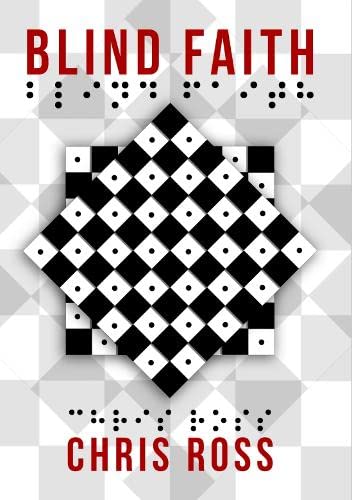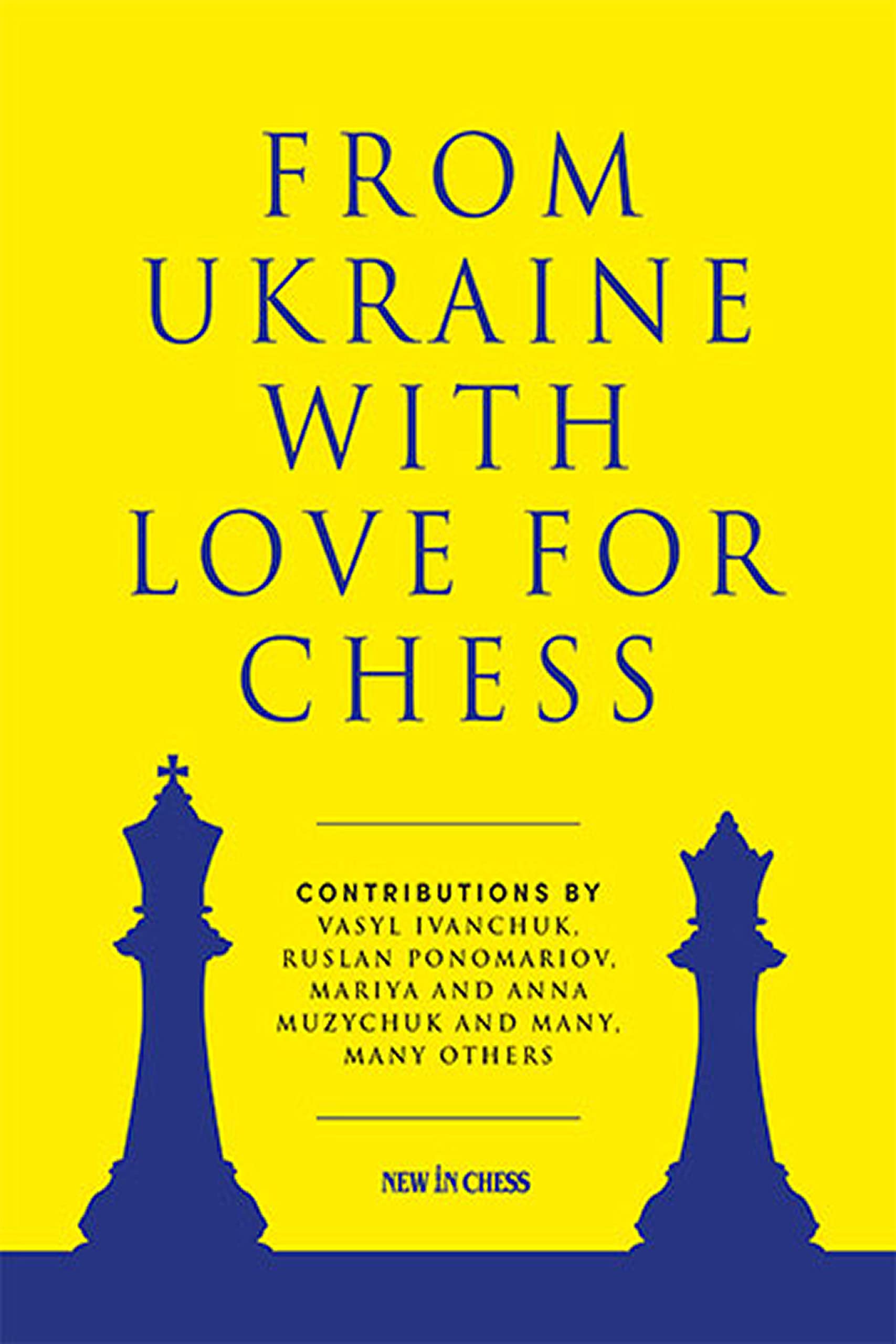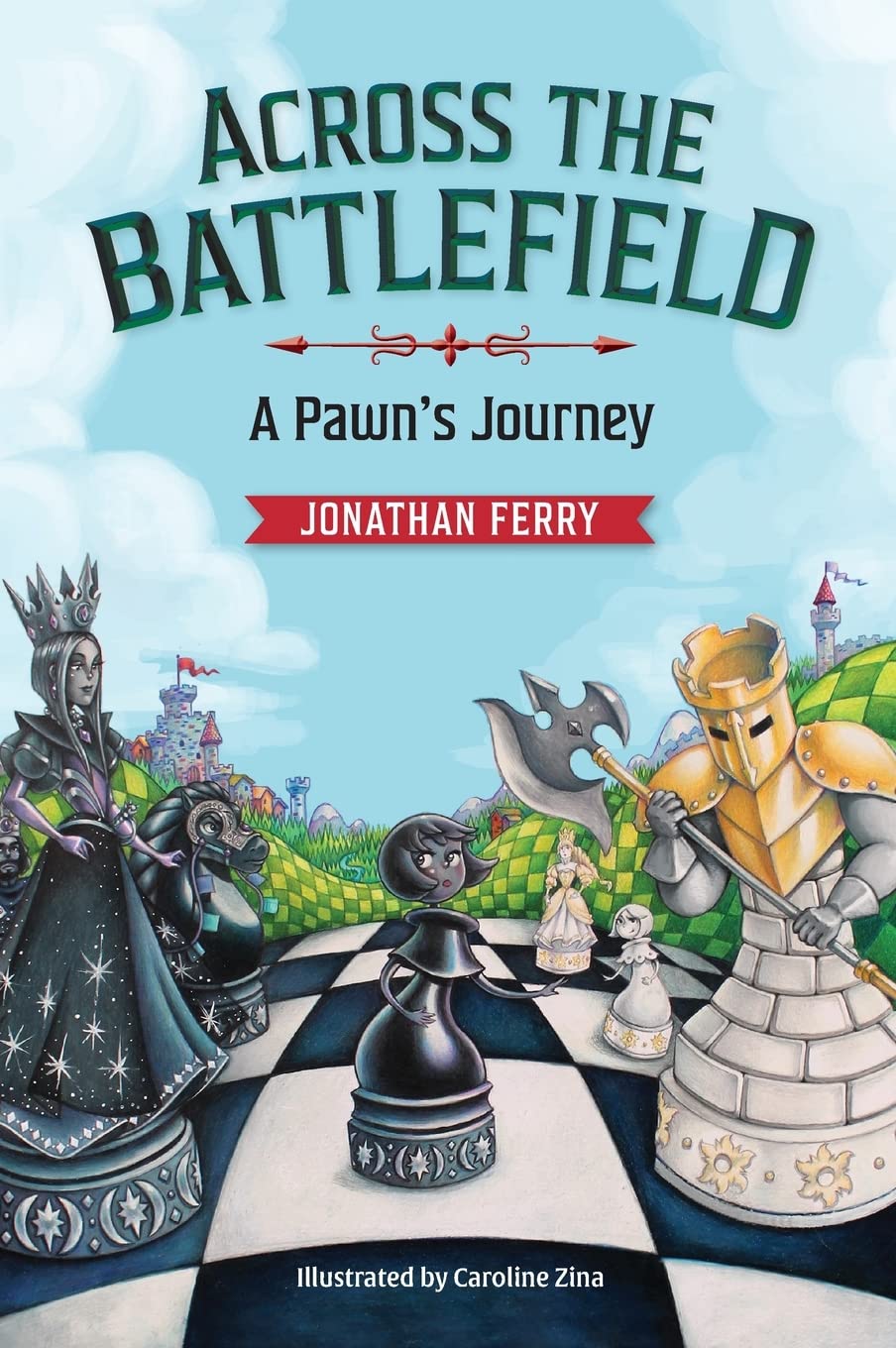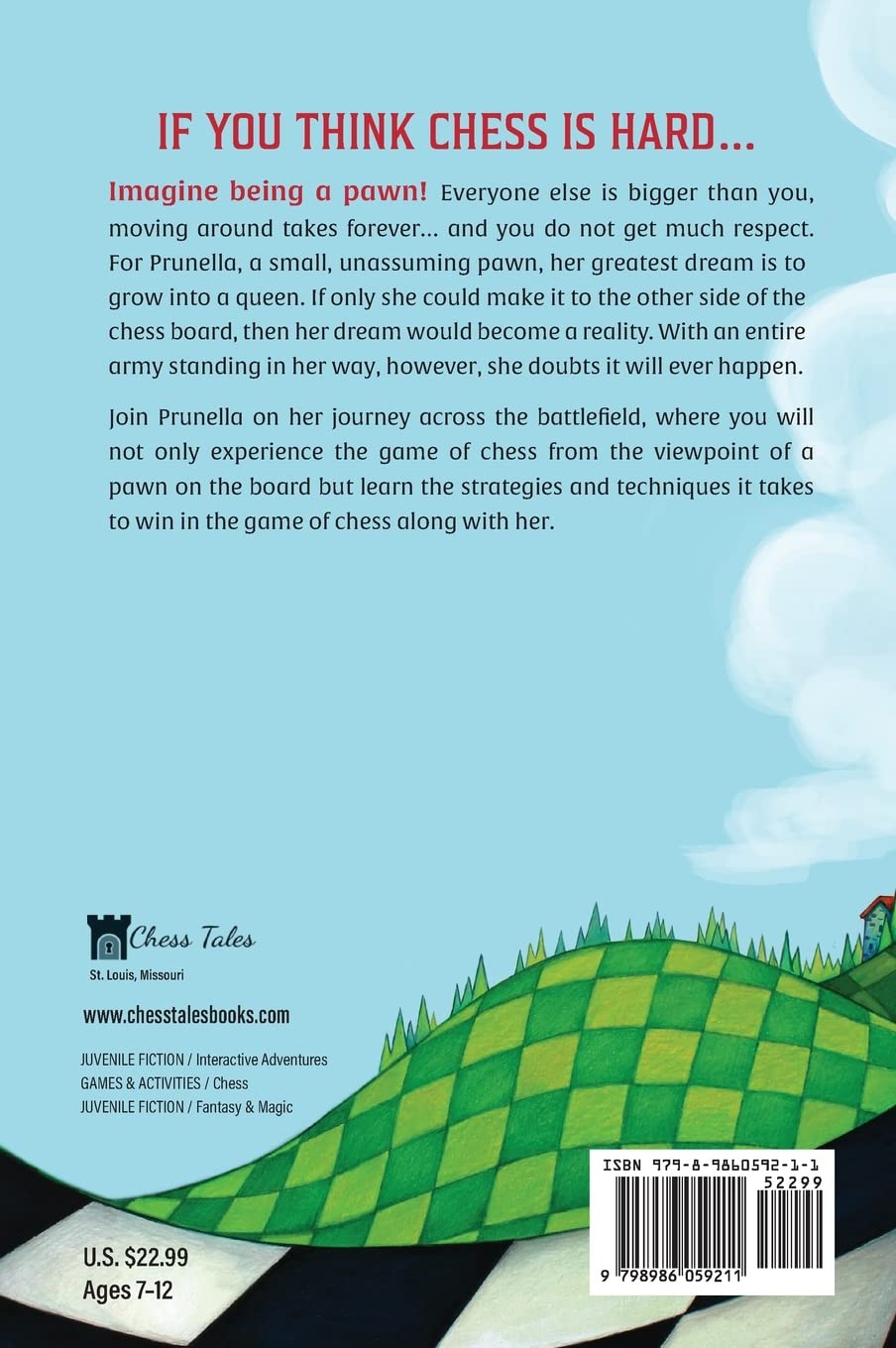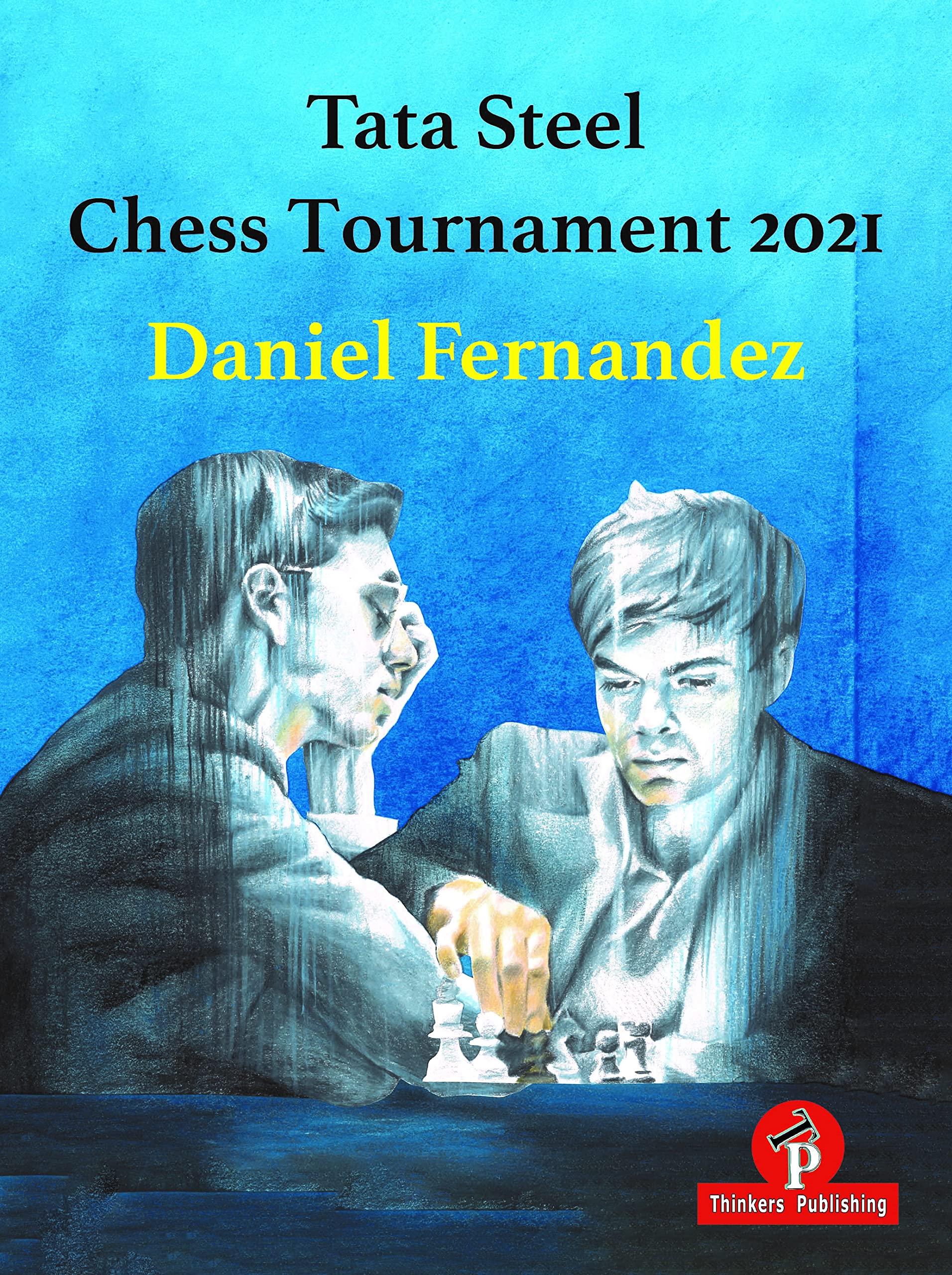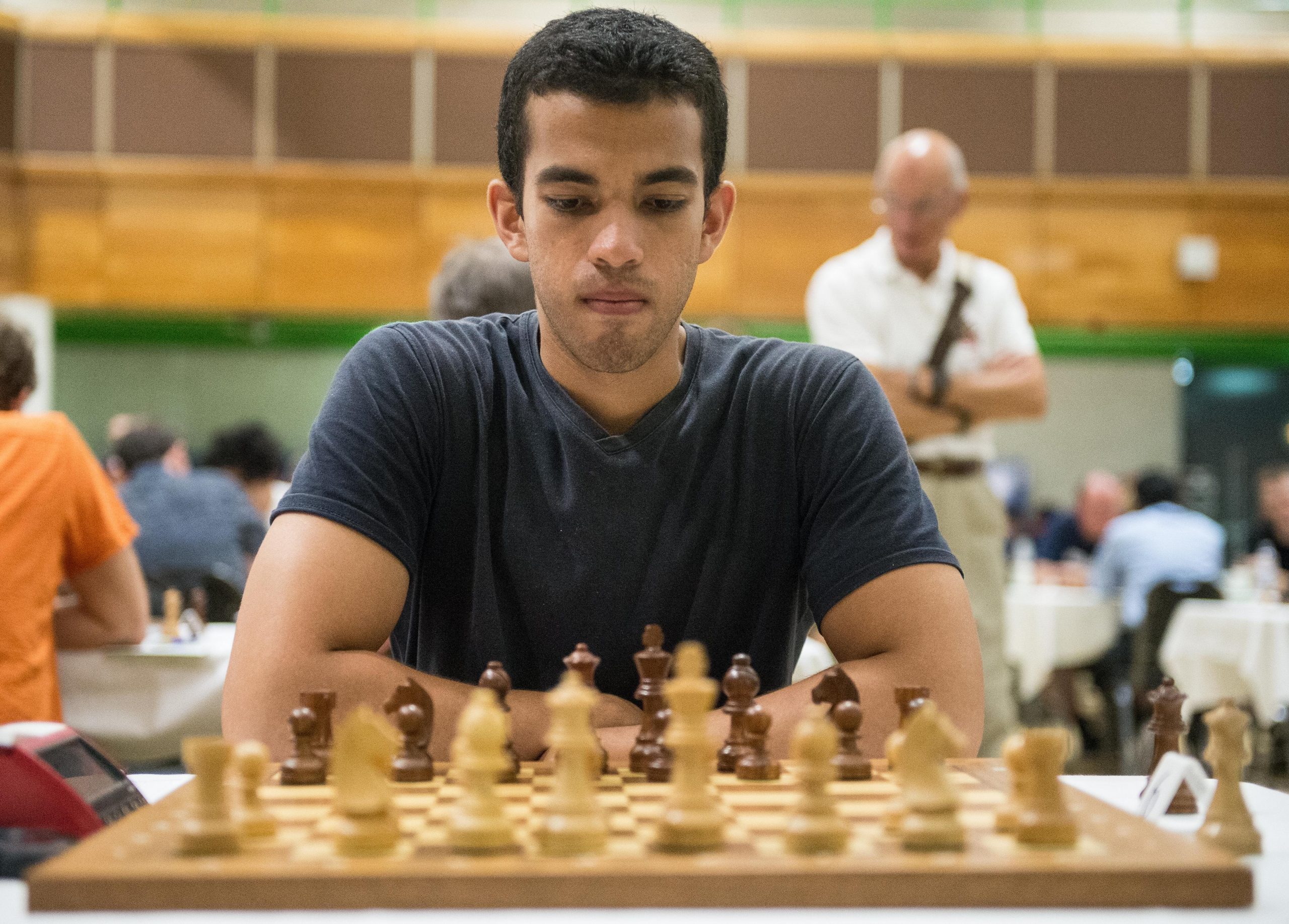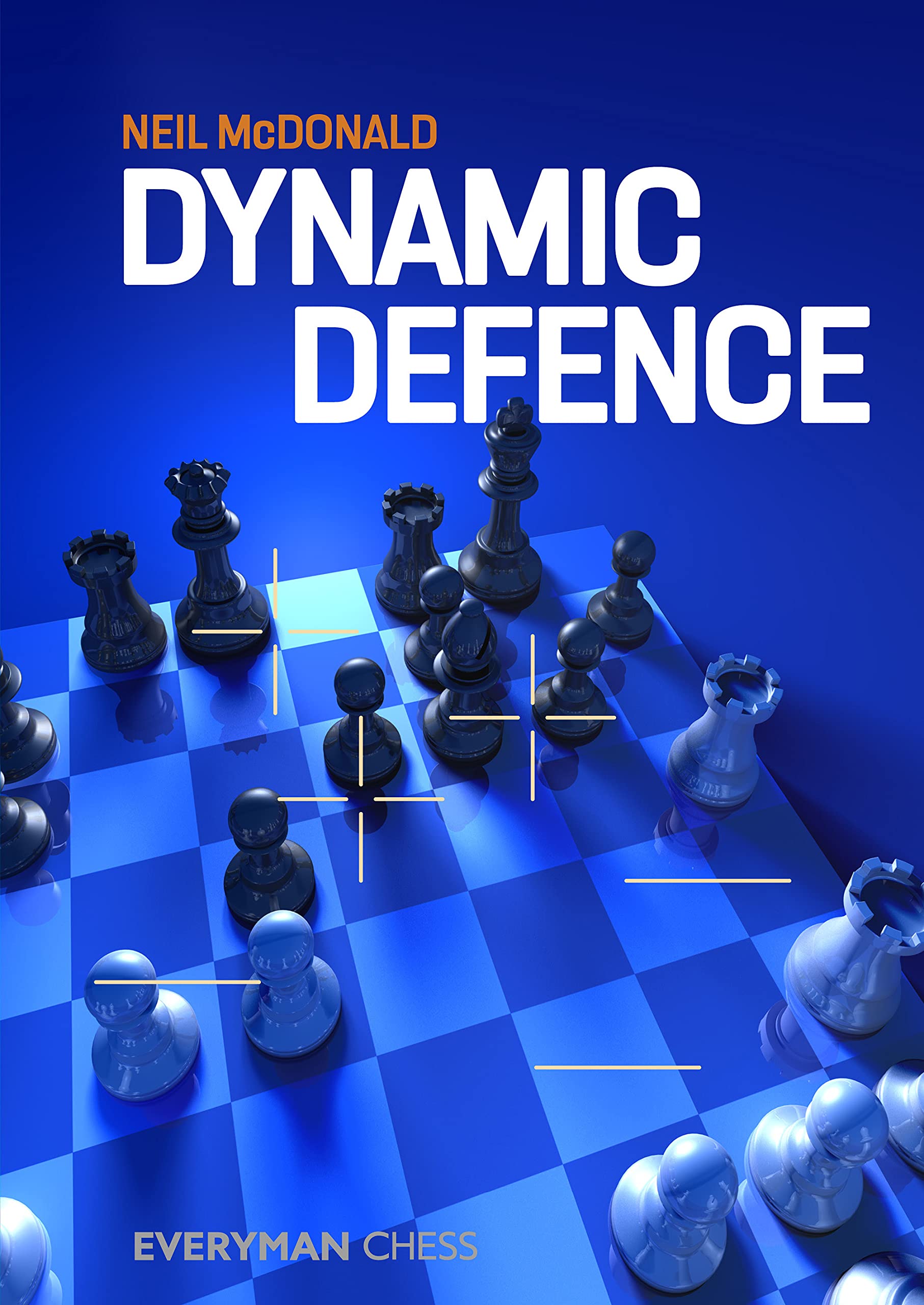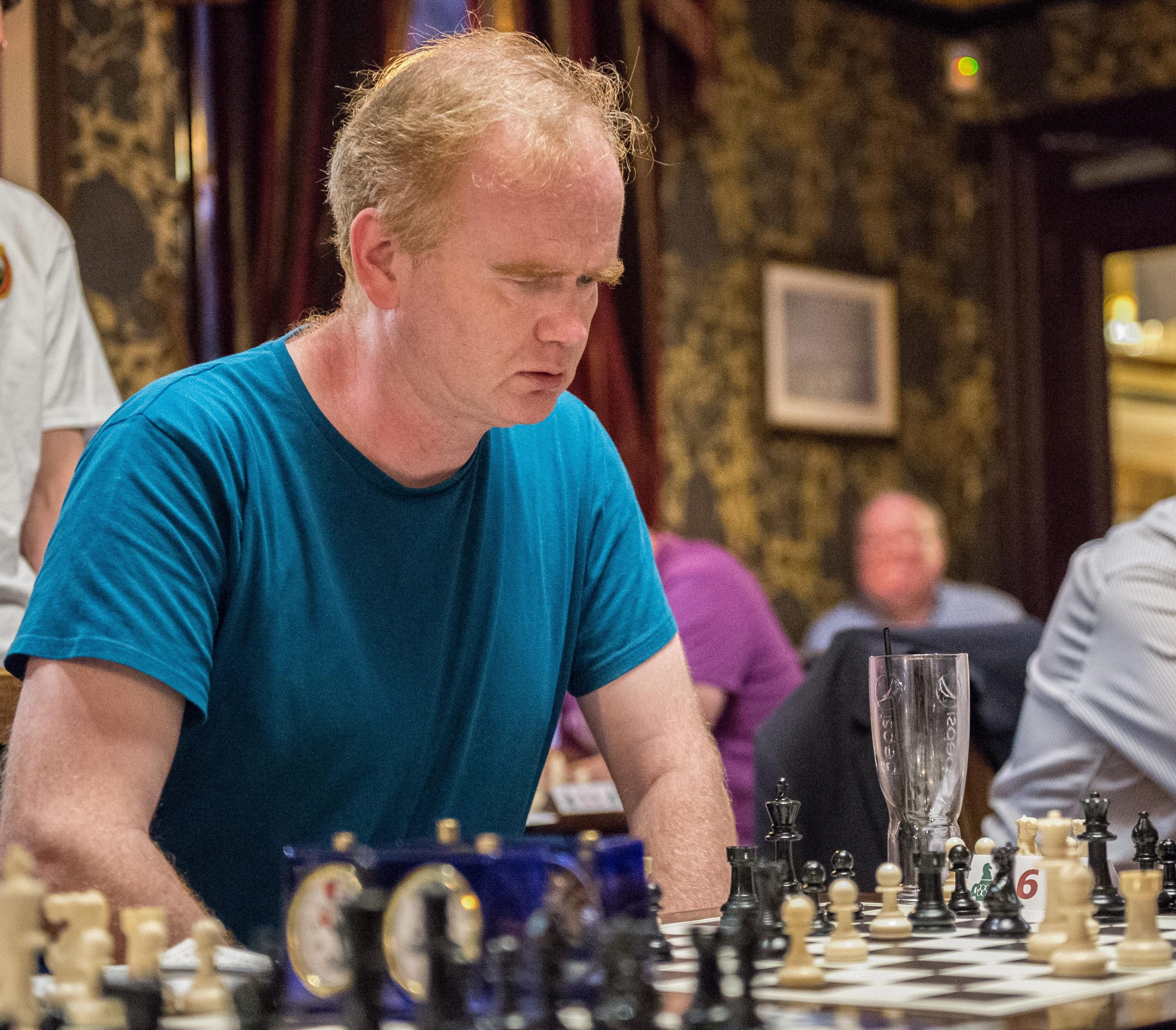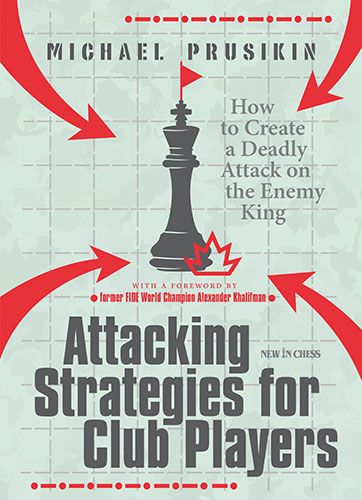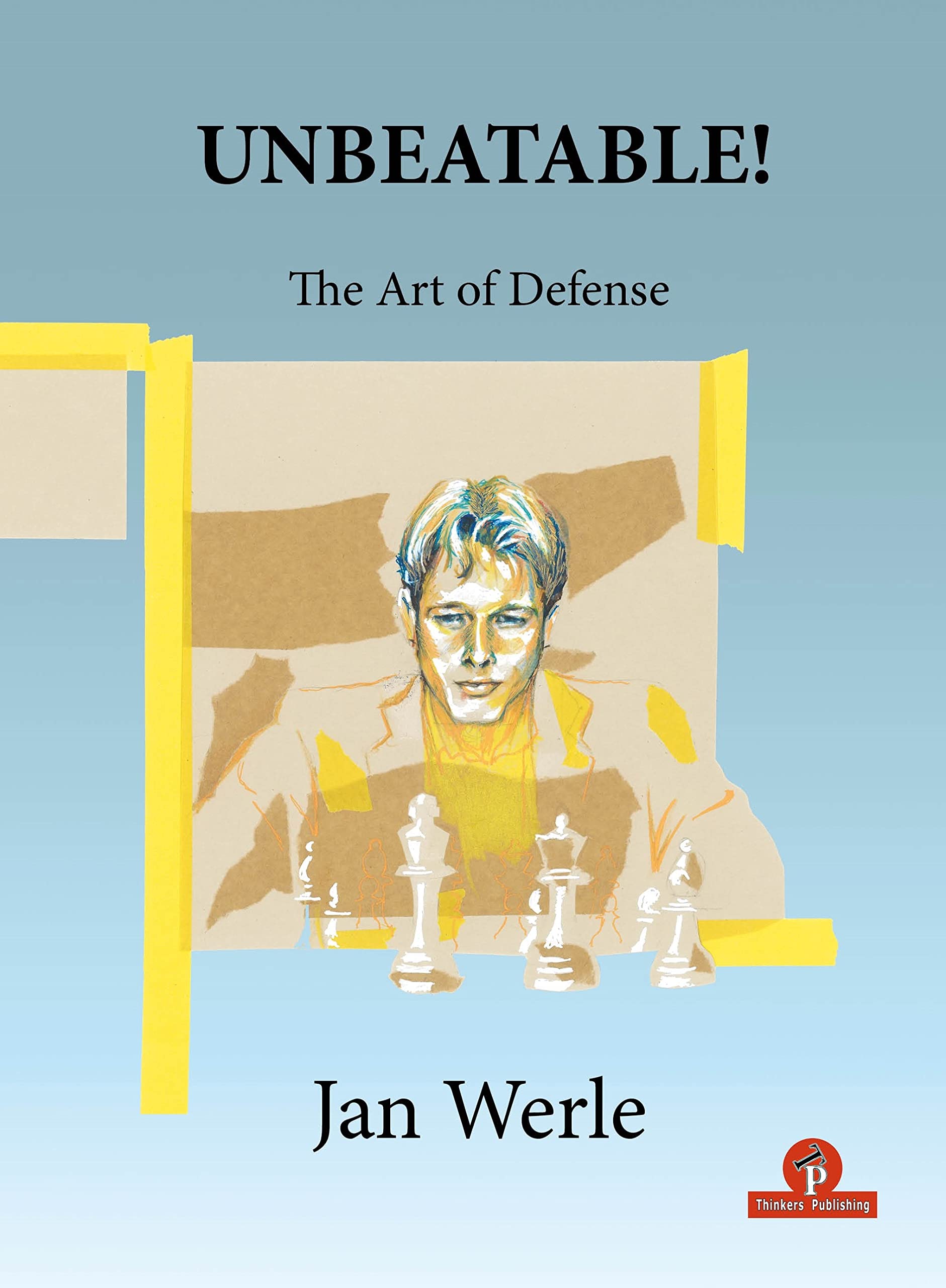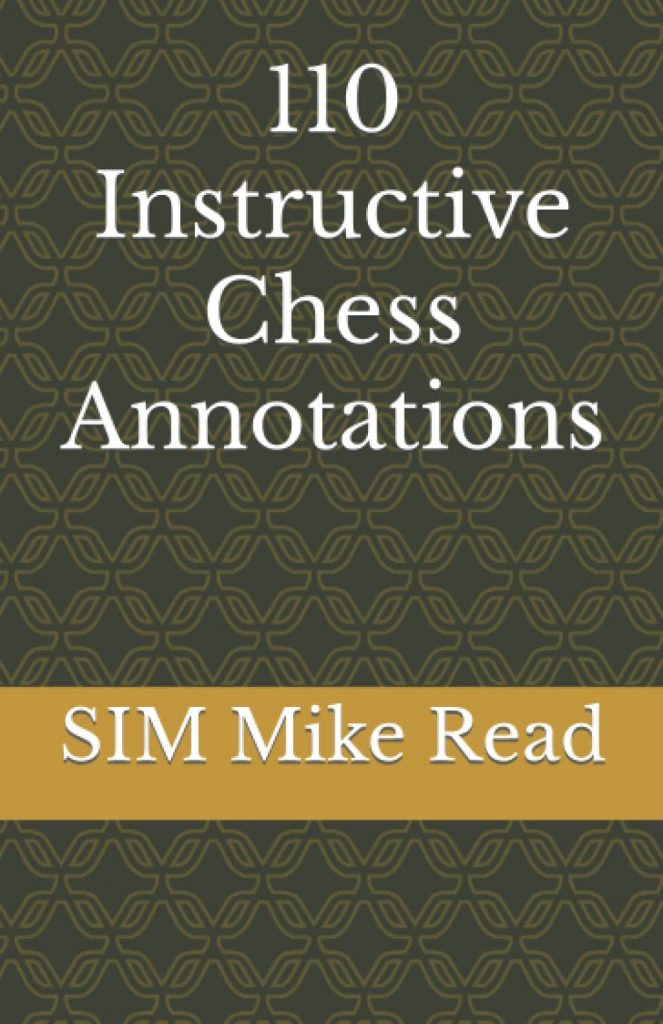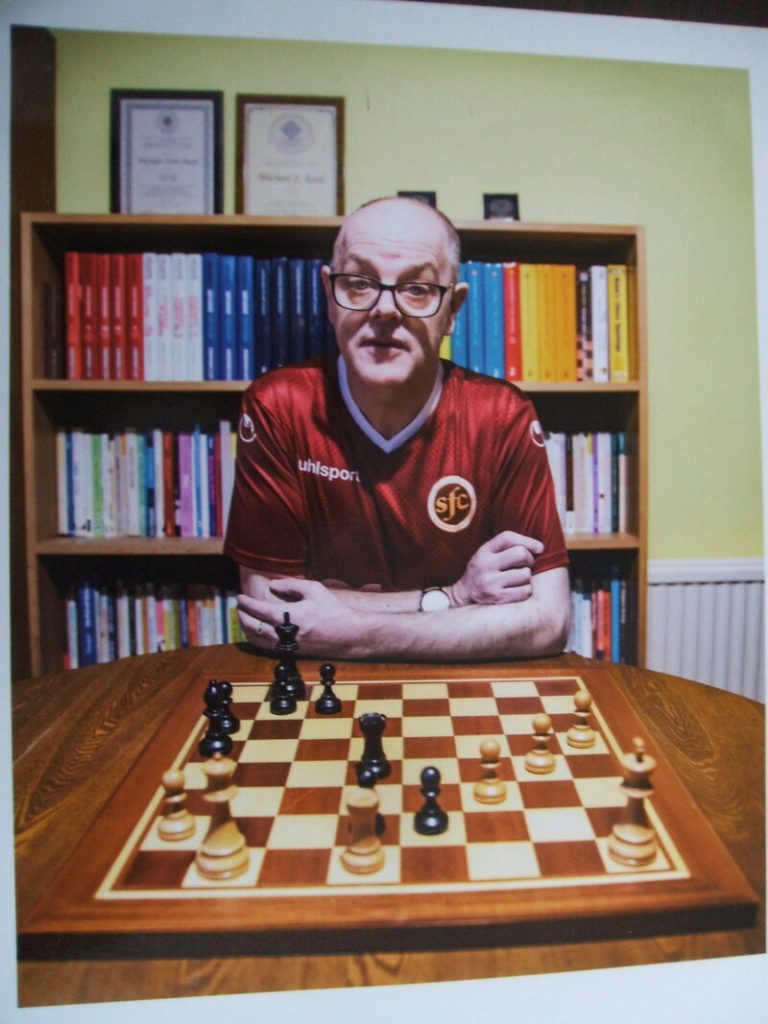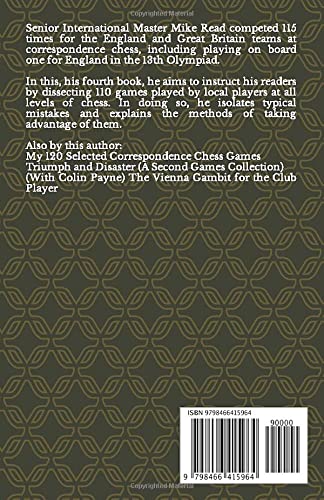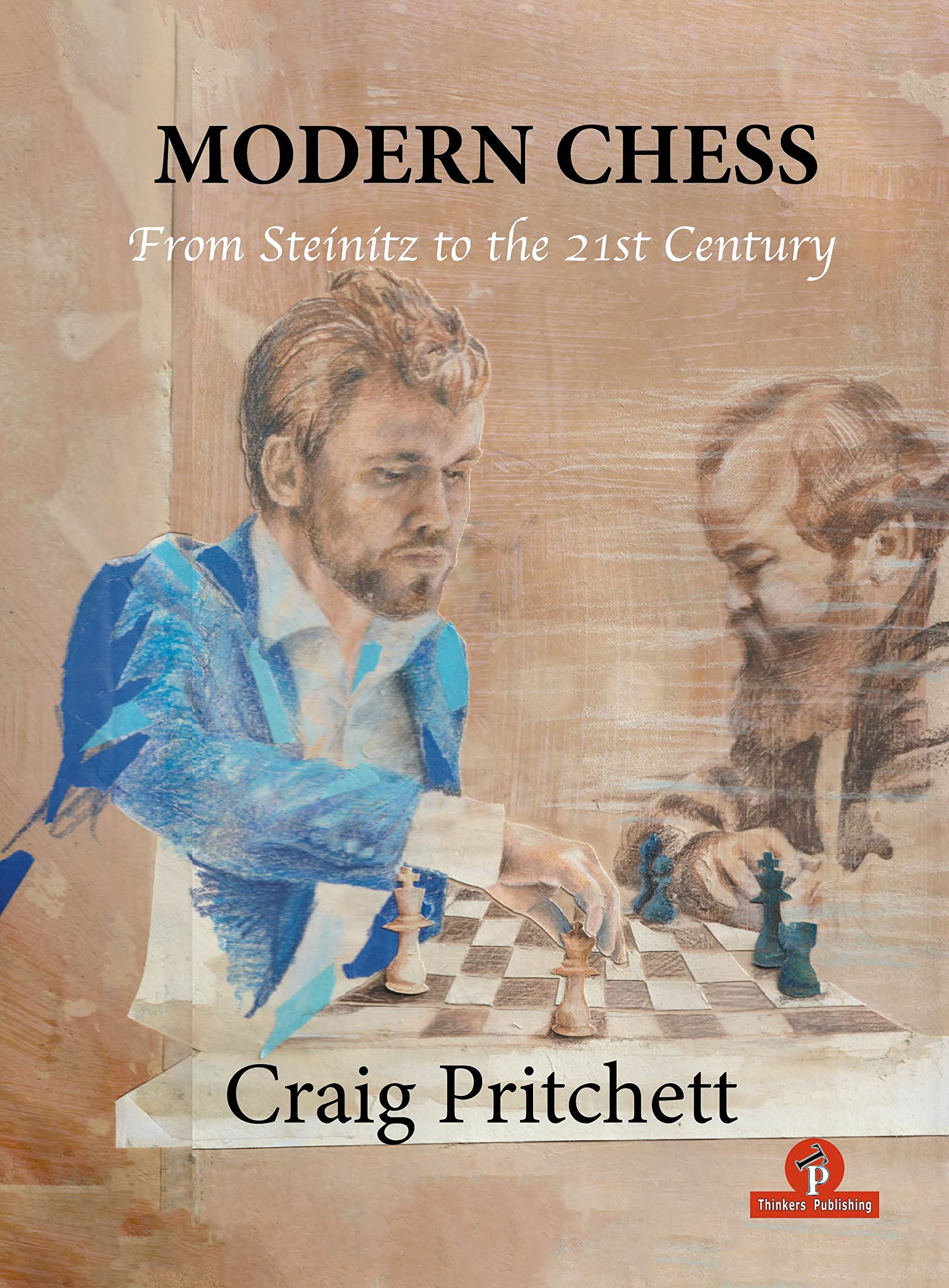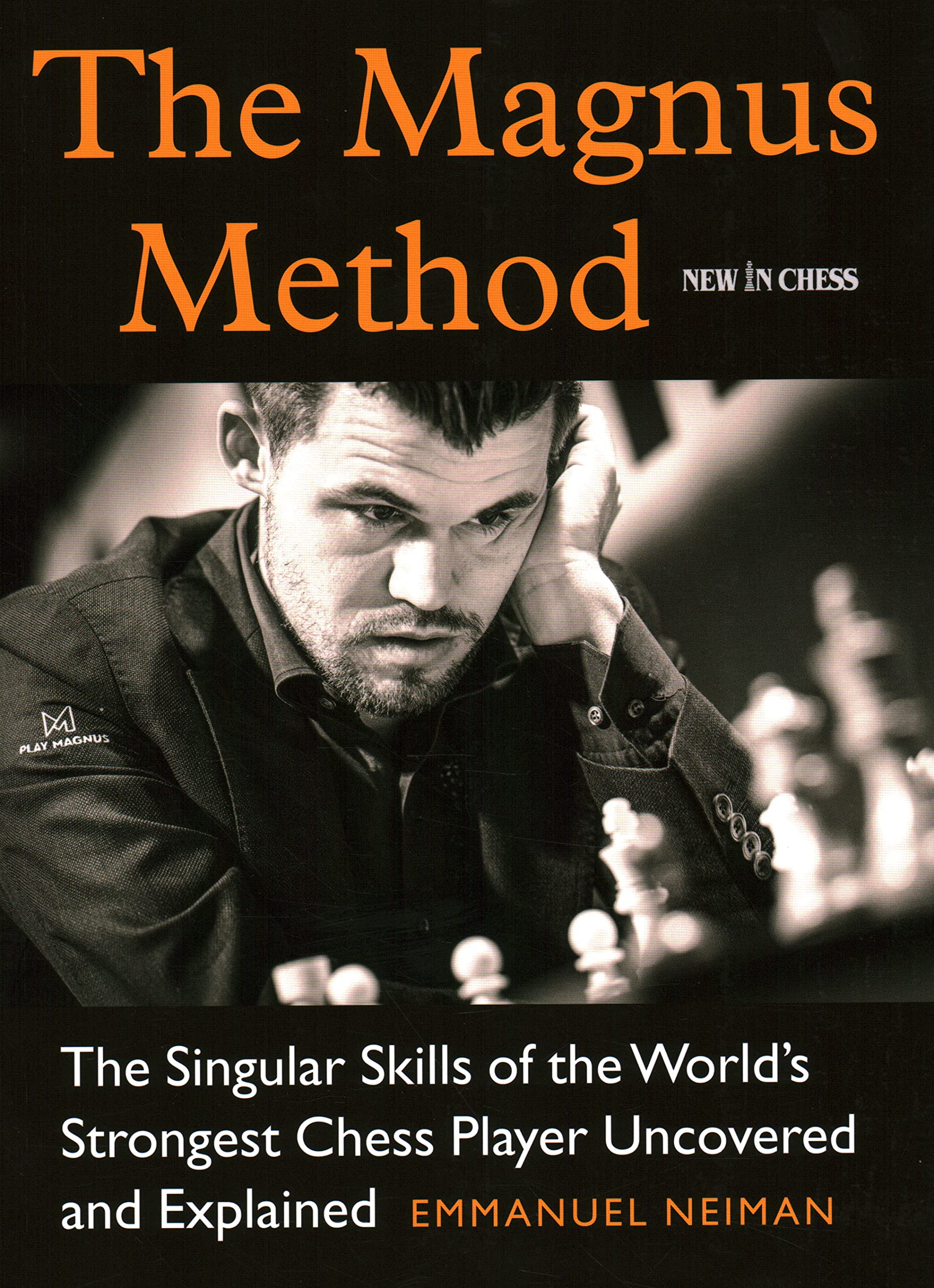
Here is the publishers blurb from the rear cover :
“What is it that makes Magnus Carlsen the strongest chess player in the world? Why do Carlsen’s opponents, the best players around, fail to see his moves coming? Moves that, when you replay his games, look natural and self-evident?
Emmanuel Neiman has been studying Carlsen’s games and style of play for many years. His findings will surprise, delight and educate every player, regardless of their level. He explains a key element in the World Champion’s play: instead of the absolute’ best move he often plays the move that is likely to give him the better chances. Carlsen’s singular ability to win positions that are equal or only very slightly favourable comes down to this: he doesn’t let his opponents get what they hope for while offering them the maximum amount of chances to go wrong. In areas such as pawn play, piece play, exchanges as a positional weapon and breaking the rules in endgames, Neiman shows that Magnus Carlsen has brought a new understanding to the game.
Neiman also looks at Carlsen’s key qualities that are not directly related to technique. Such as his unparalleled fighting spirit and his ability to objectively evaluate any kind of position and situation. Carlsen is extremely widely read and knows basically everything about chess. What’s more, as the most versatile player in the history of the game he is totally unpredictable. The Magnus Method presents a complete analysis of the skills that make the difference. With lots of surprising and instructive examples and quizzes. Examining Carlsen’s abilities together with Emmanuel Neiman is a delightful way to unlock you own potential.”
About the author :
Emmanuel Neiman is a FIDE Master who teaches chess in his home country France. He is the (co-) author of Invisible Chess Moves and Tune Your Chess Tactics Antenna, highly successful books on tactics and training.
The Chapters are as follows:
Explanation of symbols
Foreword
Introduction
Chapter 1) Style: from Karpov to Tal?
Chapter 2) The opening revolution
Chapter 3) Attack: inviting everyone to the party
Chapter 4) Defence: the preventive counter-attack
Chapter 5) Tactics: ‘les petites combinaisons’
Chapter 6) Exchanges: Carlsen’s main positional weapon
Chapter 7) Calculation: keeping a clear mind
Chapter 8) Planning: when knowledge brings vision
Chapter 9) Pawns: perfect technique and new tips
Chapter 10) Pieces: the art of going backwards
Chapter 11) Endings: breaking the principles
Chapter 12) How to win against Magnus Carlsen: the hidden defects?
Chapter 13) Games and solutions
Index of names
Bibliography
Emmanuel Neiman has produced a fascinating book in which he tries to answer the question; what makes Magnus Carlsen unique and sets him apart from his peers? Magnus is currently the 5 time world champion and been the no.1 position in the FIDE World rankings since July 2011. In addition to this remarkable feat Magnus has also been the World Rapid Chess Champion (three times) and the World Blitz Champion (five times). This is even more remarkable when you consider that Magnus is still only 31. Since the book was published in 2021 Magnus has announced that he will not be defending his title and will effectively step down as world champion in 2023. As well as his achievements over the board Magnus co founded the company Play Magnus AS in 2013 and in Aug 2022 the company accepted an offer from Chess.com that will see the two companies merge.
A lot has been written about Magnus Carlsen over the years but one of the most interesting articles I found was written by Jonathan Rowson in 2013 in which he described Magnus as a ‘nettlesome’ player. “we needed the word ‘nettlesomeness’ to capture the quintessence of his strength, which lies in his capacity to induce errors by relentlessly playing moves that are not only good, but bothersome.” (https://en.chessbase.com/post/carlsen-the-nettlesome-world-champion Magnus is a very pragmatic player, who has the ability to play accurate moves that maximise the chances for inaccuracy by his opponents rather than always looking for the ‘best’ move. Magnus is also an extremely well-rounded chess player. In terms of dynamic attacking play, Kasparov was probably better than him. In terms of positional play people will argue that Karpov and Kramnik at their best could give Magnus a run for his money. However, no player in chess history can play both tactical, strategic and technical positions as well as Magnus. He is also one of the toughest defenders out there. He does occasionally get bad positions but when he does, he digs in and defends like his life depends on it. His opponent has to play with razor-sharp precision to even think about winning. Finally, Gary Kasparov in an interview once described Magnus as a lethal combination of both Fischer and Karpov https://www.youtube.com/watch?v=Np1zODg5cqc.
In writing this book the author sets out to answer two questions; firstly, what does Magnus bring to the game and secondly what specific tools does he use? When you play though his games they can look deceptively simple. At some point his opponent (often one of the best players in the world) will blunder, often after conducting a long and difficult defence in a seemingly level endgame.
The introduction spans 21 pages and could have been a stand-alone chapter covers two aspects of Carlen’s play, his technique and the characteristics of his play that are not directly related to technique. The technique covers how Magnus is able to win equal or slightly advantageous positions, even against the strongest players in the world. Carlsen will try and keep the position alive at all costs and avoid getting to a position where his opponent knows what to do. Carlsen will constantly look for ways to change the position in both the middlegame and the endgame. So that when his opponent has solved one problem he will be faced with a further set of problems.
Moving onto Carlsen’s strong points the author examines the following attributes:
- Evaluation – constantly trying to get an objective assessment of a position before making any decisions or making a plan.
- Chess Knowledge – practically knows everything there is to know about the game.
- Versatility – he can play virtually any opening and any type of game.
- Fighting Spirit – sets out to win every game he plays.
- Pragmatism and Perfectionism – Carlsen is a pragmatist rather than a purist.
- Intelligence/psychology – Carlsen was a gifted child and owes very little to coaches or outside help.
Chapter 1 covers Magnus’s style of play and how that has changed over time. Starting out as a tactician then becoming a more technical player then evolving into the universal player that he is today. This has enabled Magus to be successful in all formats of the game. Chapter 2 describes the changes that have taken place in opening preparation. Previously elite players would prepare long concrete lines and spend a considerable time researching opening novelties. Many openings were not played by the top players as they weren’t considered to be strong enough. Carlsens approach is radically different and he will literally will play anything and everything. This has minimised the importance of the opening and placed more emphisis on middlegame and endgame play.
Chapters 3 -10 These 10 chapters each cover a particular characteristic of Carlsen’s play and begin with a short introduction followed by a number of exercises for the reader to solve. The solutions are found in the final chapter of the book. (Games and Solutions) This consists of 248 annotated games or positions. The structure of this book is different from other similar books where the reader is asked to solve a position and find the correct move for one side. Here the diagrams at the end of each chapter refer to specific games and specific diagrams within the game. However I did have a problem with this approach as I feel that there were too many problems to solve from specific games and in many cases several diagrams were included where there are only few moves between the diagrams. In several cases like this I was able to work out the solution to a problem by referring to the next diagram and deducing how to get to the next position. Also, it is not clear whether the reader is being asked to find a single move or to calculate a number of variations. I would have liked to have known in advance how difficult each problem is to solve. This does detract from the book but it making it a good book rather than an excellent one.
Clearly a lot of research has gone into producing this book and organising the material therein. Virtually all of the games in this book were played against the world’s elite players with the most recent games played in 2021. Some of these games are from online events even including a couple of games from ‘Banter Blitz’ events. There are also a few of his junior games as well. The games are well annotated with a nice balance between explanations and analysis. This book can be read either as a collection of puzzles to solve or the reader can skip the puzzles and just enjoy playing through the games.
Overall the author succeeded in answering the two questions that he posed at the beginning of the book specifically what Magnus Carlsen brings to the game and what is his approach. The book does not cover how Magnus was able to adapt his play and be so successful in the online tournaments that were played throughout 2020 & 2021. I presume that this was because the book was written in early 2021 and perhaps this will be addressed in a future edition.
Addendum, the day after I finished completed this review I saw an article on the Chessbase website that Magnus Carlsen had just recorded a podcast with Lex Fridman (https://www.youtube.com/watch?v=0ZO28NtkwwQ ) This is a 2.5 hour conversation covering a wide range of chess (and non-chess) related topics. Lex has previously interviewed Gary Kasparov (see link above) and more recently Demis Hassabis ( https://www.youtube.com/watch?v=Gfr50f6ZBvo ) CEO and co-founder of DeepMind.
Tony Williams, Newport, Isle of Wight, 30th August 2022
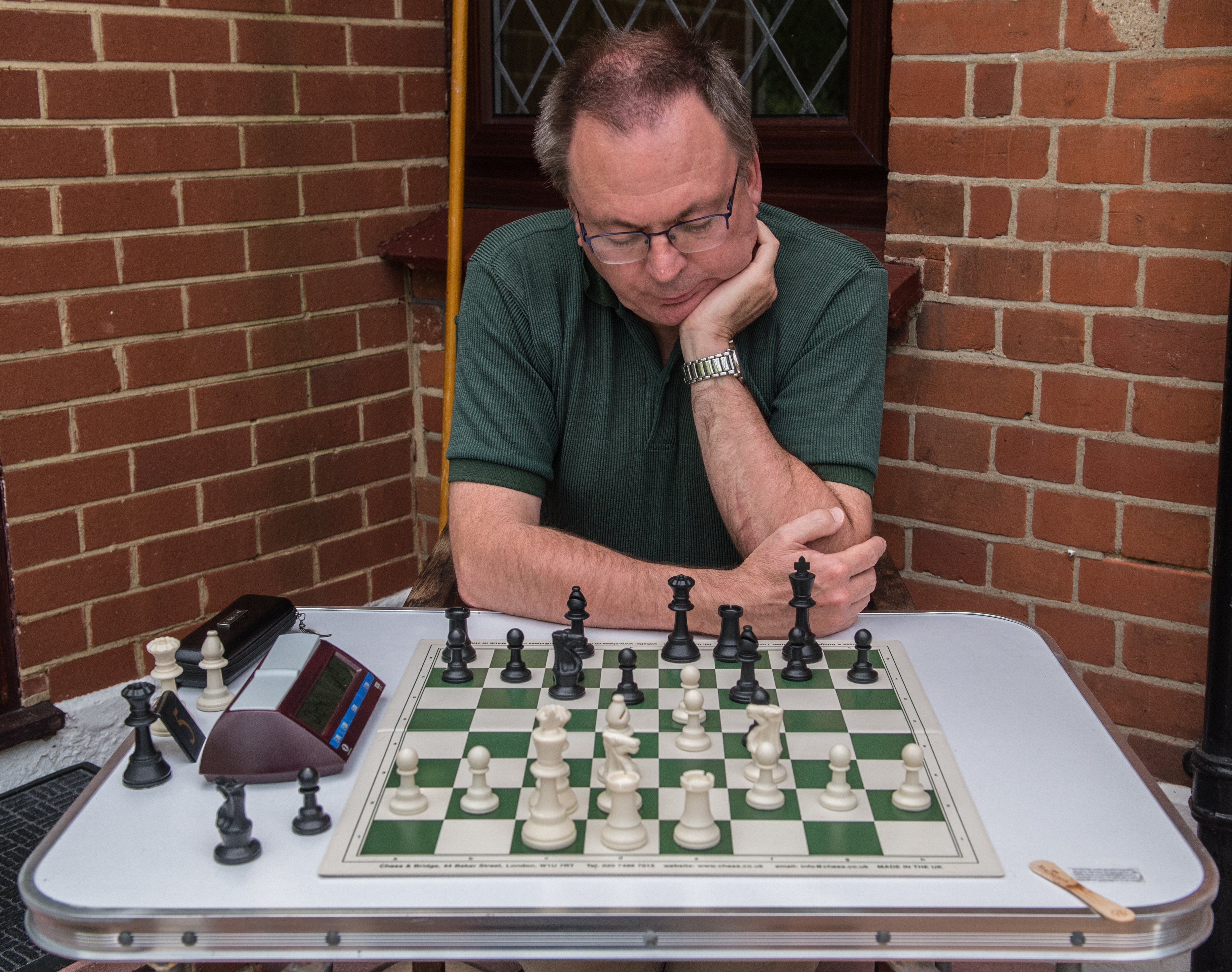
Book Details :
- Paperback : 320 pages
- Publisher:New In chess (9 Oct. 2021)
- Language: English
- ISBN-10:9056919687
- ISBN-13:978-9056919689
- Product Dimensions: 17.17 x 2.11 x 23.67 cm
Official web site of Everyman Chess


